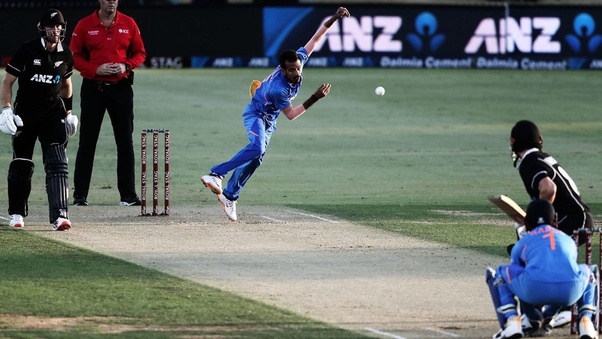Introduction:
Cricket, often called the gentleman’s game, is a sport rich in nuances and technicalities. One such critical element that cricket enthusiasts and novices grapple with is the concept of “overs.” In this article, we embark on a journey to demystify overs in cricket, shedding light on their significance, rules, and impact on the game.
What Are Overs in Cricket?
In cricket, an “over” is a set of six deliveries bowled by a single bowler from one end of the pitch to the batsman at the other. Overs play a pivotal role in shaping the game’s dynamics, providing a structured framework for both batting and bowling teams.
The Anatomy of an Over:
Understanding the nuances of an over is crucial for anyone seeking to appreciate the sport entirely. Each over comprises six deliveries, and the bowler aims to exploit these opportunities to dismiss the batters or restrict their scoring.
- The Bowling End:
- The bowler delivers the six balls from one end of the pitch, known as the bowling end.
- Bowlers can use various tactics to outsmart the batters, including spin, swing, and pace.
- Scoring Dynamics:
- Batsmen strive to score as many runs as possible in an over, seizing every chance to hit boundaries or take singles and twos.
- Conversely, bowlers aim to minimize the batters’s scoring opportunities and secure wickets.
Cricket Overs and Strategy:
The Power Play and Field Restrictions:
Crucially, overs impact the field placements and strategies employed by both teams. In limited-overs formats like One Day Internationals (ODIs) and T20s, specific overs are designated as Power Plays, during which fielding restrictions are imposed. This adds a layer of complexity to the game, as teams must strategically utilize their overs.
- Statistics and Trends:
- Teams often employ their most potent bowlers during Power Plays to exploit the restricted fielding placements.
- Data reveals that teams performing well during Power Plays dominate the match.
Also Read Cricket Power Play: Strategy & Impact
Impact on Run Rates:
Overs directly influence run rates, a key metric in limited-overs cricket. Teams aim to balance consistently scoring runs and avoiding unnecessary dismissals.
- Run Rate Trends:
- Statistical analysis indicates that teams scoring consistently in the middle overs tend to post formidable totals.
- The last few overs often witness an aggressive batting approach to maximize the final capacity.
Also Read What is Net Run Rate (NRR) in cricket?
The Evolution of Overs in Cricket:
Historical Perspective:
Cricket’s evolution over the years has seen changes in overs regulations, reflecting the sport’s dynamic nature. Understanding the historical context provides valuable insights into the game’s current state.
- From 4 to 6:
- In the early days of cricket, overs comprised four deliveries per bowler. This changed to the current six deliveries per over in the 19th century.
- The expansion to six deliveries brought a more strategic dimension to the game.
Innovations and T20 Cricket:
Twenty20 (T20) cricket has been a game-changer, revolutionizing how overs are perceived. T20 matches feature a mere 20 overs per side, intensifying the importance of each delivery.
- Express Cricket:
- T20 cricket’s popularity has soared due to its fast-paced nature, attracting a broader audience.
- Bowlers and batters must adapt their strategies to succeed in the condensed format.
Also Read Cricket Bowling Techniques
Special Insights into Overs in Cricket:
Maximum Number of Overs a Bowler Can Bowl in T20 Cricket:
In T20 cricket, a bowler is limited to bowling a maximum of four overs in an inning. This constraint adds an extra layer of strategy, as captains must carefully manage their bowling resources to optimize their team’s performance.
- Strategic Bowler Rotation:
- Teams strategically rotate bowlers to maximize their impact while adhering to the four-over limit.
- Utilizing a key bowler’s quota becomes a crucial decision in T20 matches.
The Meaning of Overs in Cricket:
Overs, beyond being a mere numerical measure, symbolize the rhythm and flow of a cricket match. They encapsulate the strategic battle between bat and ball, providing a canvas for captains and players to craft their moves and counter-moves.
- Symbolism in Overs:
- Overs represent strategic phases in a game, influencing team dynamics and setting the tone for crucial moments.
- The significance of overs extends beyond the numerical count, intertwining with the match’s narrative.
Death Overs in Cricket:
The term “death overs” refers to the final phase of an inning, typically the last five to ten overs. This period is characterized by aggressive batting and a sense of urgency as teams look to maximize their run total before the inning concludes.
- Strategies in Death Overs:
- Batsmen aim for big hits to clear the boundary and accumulate quick runs.
- Bowlers face the challenge of containing the opposition while hunting for crucial wickets.
Tie-Breaking Methods in Limited-Overs Cricket:
In limited-overs cricket matches, the possibility of a tie adds suspense and drama to the game. The tie-breaking method employed to determine the winner is often a topic of interest among fans and pundits.
- Name of the Tie-Breaking Method:
- The tie-breaking method used in limited-overs cricket matches is commonly known as the Super Over.
- The Super Over involves a one-over per side eliminator, where each team faces six deliveries, and the team with the highest score emerges as the winner.
Conclusion: Decoding the Language of Overs in Cricket
In conclusion, overs in cricket are not merely a numerical construct; they are the game’s heartbeat. From the historical roots of four-ball overs to the modern-day six-ball format and the frenetic pace of T20 cricket, overs shape the strategic landscape of the sport.
As fans, players, and analysts, embracing the intricacies of overs adds a layer of appreciation for the game’s beauty and complexity. So, the next time you tune in to watch a cricket match, pay attention to the overs – the silent architects of thrilling contests on the cricketing field.
I am Dhaval Jain, SEO All-Rounder at CricHeroes.
CricHeroes is an ultimate Cricket Scoring App and the world’s only true Cricket Network. With more than 30 million registered cricketers using CricHeroes to Live Score their Local Cricket Matches and Tournaments, CricHeroes is already the number one Cricket Scoring App in the world!










